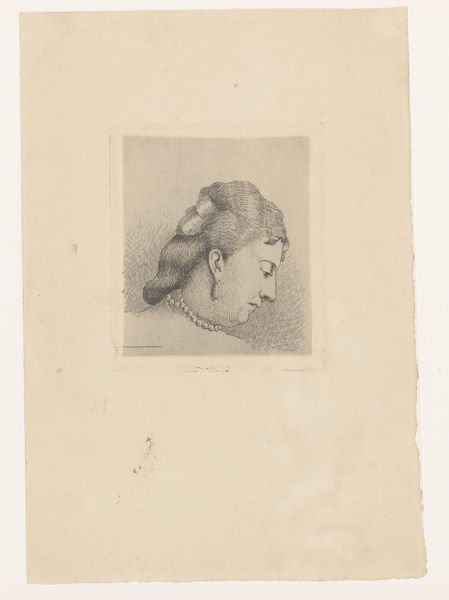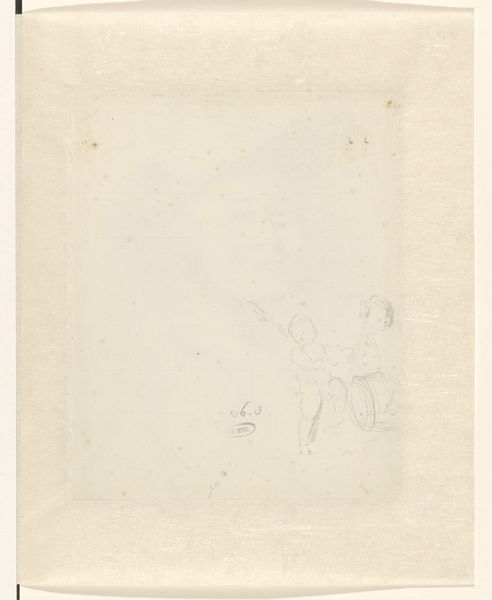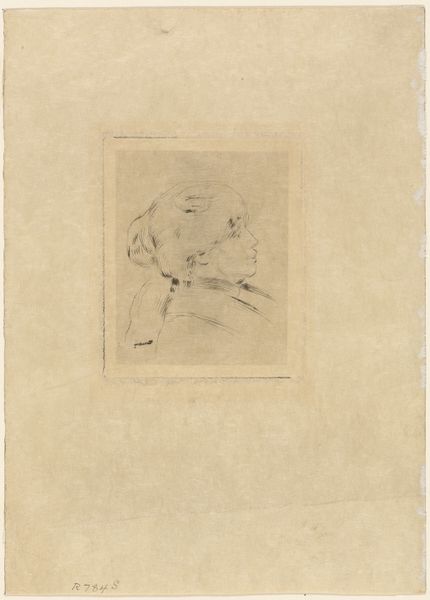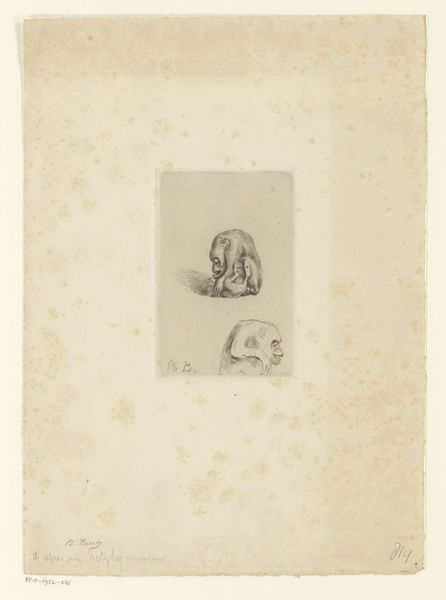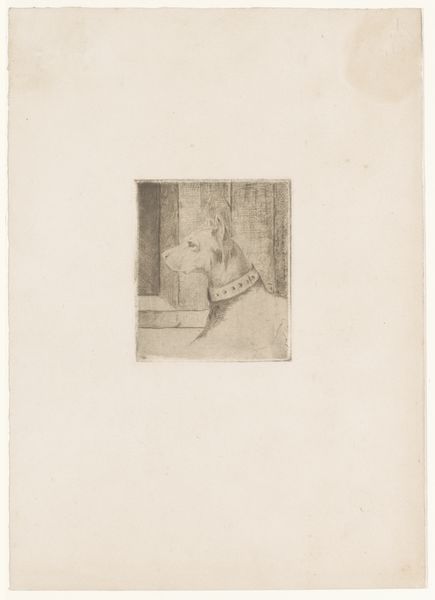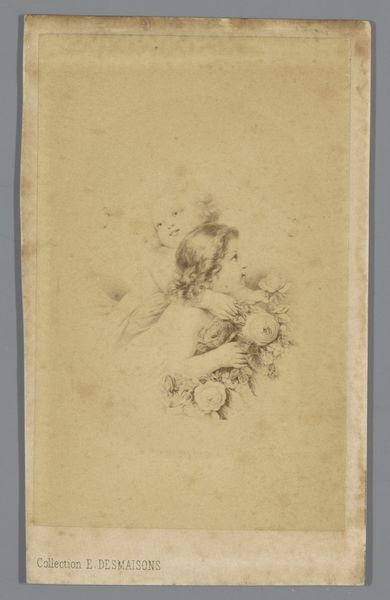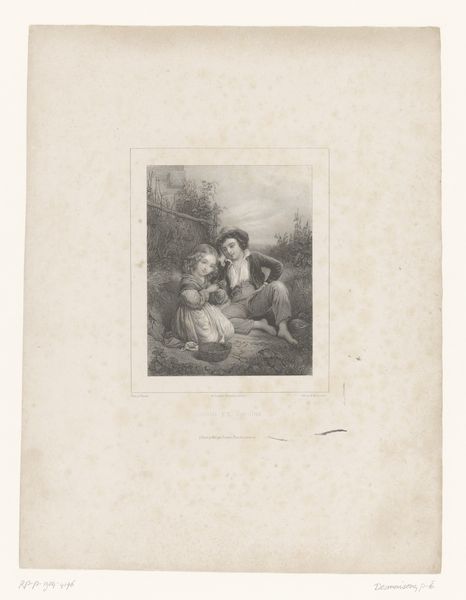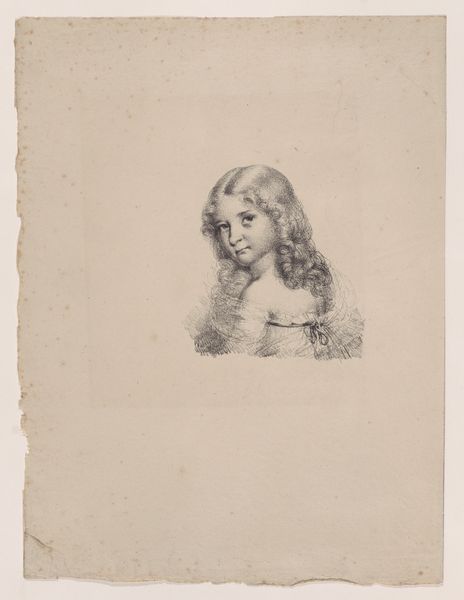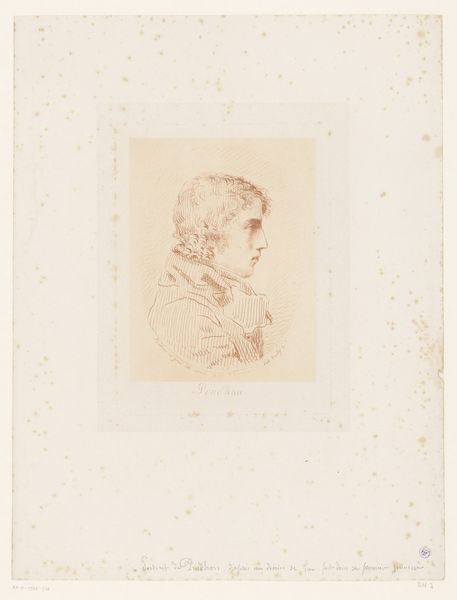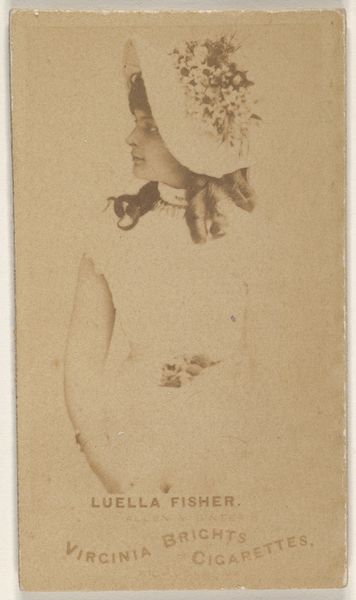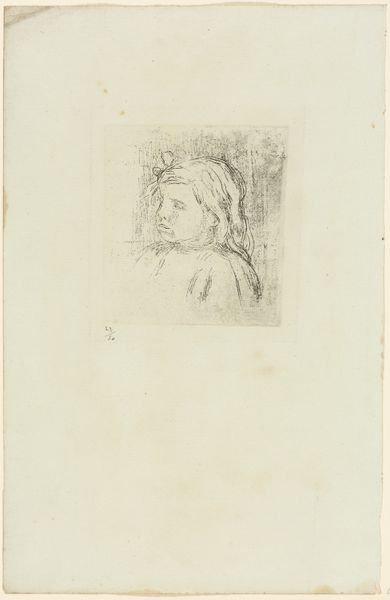
drawing, paper, watercolor
#
portrait
#
drawing
#
water colours
#
impressionism
#
paper
#
watercolor
#
miniature
#
watercolor
Dimensions: height 414 mm, width 229 mm
Copyright: Rijks Museum: Open Domain
Curator: What a quietly affecting drawing. Jan Striening created "Twee studies van het hoofd van een meisje," sometime between 1837 and 1903. It's rendered in watercolor on paper. Editor: It strikes me as very intimate. There's a vulnerability in these studies; a sense of capturing a fleeting moment of childhood. I’m drawn to the directness of the gazes in the top study, juxtaposed with the averted eyes in the bottom. What kind of paper was Striening using, and what sort of pigment did he prefer? Curator: Those are great questions. Sadly, details regarding the exact type of paper and watercolor pigment used by Striening aren't explicitly documented in a way that distinguishes his preferences. However, given the period, it's probable he employed locally sourced, laid paper that could showcase the watercolor techniques he was learning. Thinking of process and material constraints in the period helps understand it more, I think. Editor: Right, and considering the likely social context of artistic training, I wonder who this young girl was to Striening. Was she a family member? Or perhaps a child from a local orphanage brought in as a model to study anatomy and features? Such considerations inevitably frame our engagement with portraiture from this era, influencing our response to what feels so immediate about these sketches. Curator: Indeed. Understanding that production angle enriches our view. It makes one think about the cost and supply chains that made artmaking like this possible. But it would also be easy to be reductionist, because I think this has an aesthetic intention that is fulfilled, that does achieve a certain degree of what we think of today as intimate, capturing fleeting emotional states. Editor: I agree that stripping away the emotional intention wouldn't serve it either, but thinking about the art practice here, the process of selecting, preparing, and rendering this figure does carry implications about power dynamics inherent in who gets seen, how, and by whom. Striening immortalizes this subject while leaving much unsaid about her world beyond this page, which in and of itself makes this image of course both special but also laden. Curator: It makes you wonder how he would consider such critical readings today. Thanks for opening this perspective. Editor: My pleasure, I do enjoy finding how new critical views give even very quiet and traditional pieces some additional layers to think through.
Comments
No comments
Be the first to comment and join the conversation on the ultimate creative platform.
